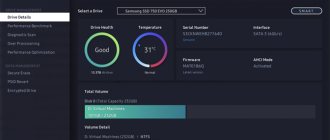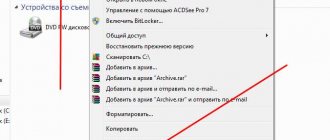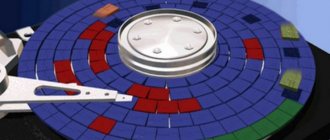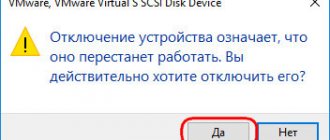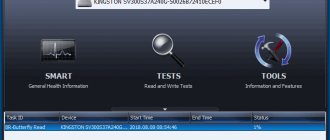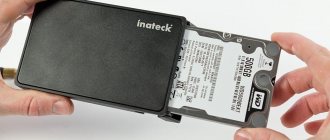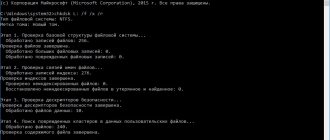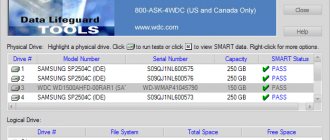This article describes the causes and solutions to the "Windows has detected a hard drive problem" error.
. If you see this warning, it means there are problems with your hard drive. The system may be corrupted or may not boot the next time you start it. As a result, there is a possibility of losing your data, such as photos, videos, music, important documents and more.
Problem overview
This problem can occur for any user. A pop-up window with this error will prompt you to create a backup copy to prevent information loss.
This is due to the fact that problems or other serious errors may occur during the operation of the disk, damaging the operating system, slowing down or even stopping its operation. It is very annoying because it can appear every 5-10 minutes. In most cases, such a message is a sign of a hard drive malfunction, system crash, loss of a system file, etc. It is not recommended to ignore it, and the best solution would be to find out the reason for the appearance.
Content:
- Possible causes of the error.
- How to fix the "Windows has detected a hard drive problem" error?
- Disk check chkdsk.
- Assessing the condition of the media.
- Checking and fixing system files.
- How can I clear the "Windows has detected a hard drive problem" error message?
- What to do if files were lost as a result of an error?
The error “Windows has detected a hard drive problem” is a fairly serious signal that indicates a problem with the system or hard drive. This error may occur with some frequency, which significantly reduces the usability of the computer. In addition, after an error, a “dead” PC freeze, blue screen or other problems may occur.
If the user sees such an error at least once, you should immediately protect yourself and back up all important information to another medium. If you don’t have anything at hand, you should upload backup copies to any cloud service. Such precautions are due to the fact that the appearance of an error indicates a possible failure of the hard drive.
Possible causes of the error
There are many reasons for this error to occur.
It usually occurs when a hard drive fails, but can also be caused by a registry error, low RAM, over-running or over-installing programs, a virus, malware, and many other reasons. You can solve this by trying to restore the system, delete unnecessary system files, or update it.
Possible causes of hard drive failure:
- Mechanical or logical error
. It is very likely that it is caused by file system corruption, bad sectors, or a mechanical problem. The hard drive is responsible for storing data, and its failure will lead to data loss.
- Damage to system files
. Their damage can be caused by incomplete uninstallation of the program, deletion of important system information, incorrect shutdown of the computer, etc. A damaged file, in turn, will lead to the absence of data required by the system for proper operation.
- Human factor
. Many users, trying to improve PC performance, may cause a system problem. For example, changing system registry settings, or the location and properties of system files. Because they have poor understanding of system components, they follow incorrect instructions or perform incorrect operations. Some of them may damage your system or hardware.
Virus
. When a computer gets infected with a virus, it will no longer function as before, even if the antivirus software removed it. The antivirus does not repair the damage caused by the virus, but only removes it. In such cases, the message is due to data corruption by a virus.
Dust accumulation
Unfortunately, many people still consider cleaning their laptop unnecessary. The design of the laptop helps draw air in, and who among us doesn’t like to sometimes lie in bed with a laptop? Thus, dust begins to settle on the most sensitive components of the laptop. All service centers offer professional laptop cleaning.
If you neglect to clean your laptop, dust can lead to a major accident, including damage to your hard drive . The hard drive's platter and head operate in a sealed environment, but dust can damage the drive's electronics or head control system. This is manifested by tapping or stopping the disk completely. It's better not to take risks; professional cleaning is much cheaper than replacing the hard drive.
How to fix the error
It is difficult to determine the cause from the error message. This does not mean that the hard drive is damaged or there is a problem with the system. Listed below are a few solutions that may help in fixing it.
Solution 1: sfc /scannow command
Use standard tools to fix errors that are built into the OS. These tools can help fix many serious problems. Standard utility "System File Checker"
will check and eliminate the error in their integrity.
To launch it, open the Start
and enter cmd in the search field.
Then right-click and select “Run as administrator”
.
For more information on how to launch the command line, watch the video
At the command prompt, enter sfc
/
scannow
and press the
Enter
.
The process will quickly show the result. This command checks system files and replaces damaged ones with a backup copy. Do not close the window until the scan is completed.
Solution 2: chkdsk command
If the first method does not work, you can check with the chkdsk
. On the command line we write it with the drive letter that needs to be checked. If you want to test the default section, you don't need to write anything else.
Type "chkdsk"
and press
"Enter"
.
If you want to perform a full scan of your hard drive with automatic correction of system file errors and bad sectors, you need to add chkdsk
parameter
/F
.
Difficulties may arise with checking the disk on which the OS is installed; the system will offer to check it the next time you reboot, for which you need to enter confirmation “Y”
.
After checking, the problem should disappear. It is recommended that you back up your data before attempting this command. Since correcting errors may overwrite some data.
Solution 3: Find bad sectors
Check bad sectors. Victoria or HDD Regenerator programs will help with this. The latter even has the function of physically restoring damaged sectors. This is realized through “magnetization”
faulty areas. For more information about how these programs work, see our channel:
If the drive has a large capacity, the scanning process may take some time. After its completion, a report on bad sectors will be displayed.
During the repair process, data stored on damaged sectors may be erased, so it is recommended to make a backup copy before starting it.
Solution 4: Service Center
Contact a disk repair service center. Repairs require special equipment and spare parts that ordinary users do not have. Some disks may still not be recoverable.
How to troubleshoot hard drive problems?
Method 1: eliminating bad blocks
First of all, you can try to get by with little expense (provided that the disk has been in use before) and check the hard disk using a special utility for the presence of bad sectors or, as they are often called, bad blocks.
There are two types of bad blocks: logical and physical. In the first case, they are formed programmatically, namely, as a result of a mismatch between the sector checksum and the checksum of the data written to this sector. This type of problem can be easily resolved using special programs.
Physical bad blocks, as the name suggests, appear as a result of physical impact. In this case, microdamage occurs in the sector, which interferes with reading the data. Blocks of this type cannot be cured, and if there are too many of them (and they tend to multiply rapidly), then you need to think about replacing the hard drive.
Today there is a sufficient selection of programs for working with the treatment of a hard drive from bad blocks. I would especially like to highlight the following:
1. Victoria.
A popular program for testing and treating bad sectors on a hard drive. The program carries out low-level work, which allows you to efficiently heal your hard drive. The program is distributed completely free of charge.
2. HDD Regenerator.
Already based on the name of the program, its purpose becomes clear. The program is able to work both under Windows and allows you to burn a Live-CD to a disk or flash drive, thereby launching scanning and treatment from under the BIOS (in the event that Windows is not installed or refuses to start). Again, the program is available to download and use absolutely free.
If, based on the results of one of the proposed programs, the problem with the performance of the hard drive has not been resolved, the problem may be much more serious, but there is still a chance that you can return the disk to normal functioning on your own.
Method 2: eliminating overheating
If Windows starts normally, but after a while the computer freezes, this may indicate that the hard drive is overheating.
You can check the temperature of the disk using special software, for example, the Speccy
. This tool is distributed free of charge, so you can download it from the developer’s official website using the link below.
Normally, the hard drive temperature should not exceed 40 degrees Celsius. If in your case, for example, the temperature is around 50 degrees, then you can notice obvious overheating of the device.
High temperatures are usually the result of a failure of one of the hard drive chips. Unfortunately, the death of the hard drive in this case is guaranteed to be inevitable, but it can be slightly delayed by installing an additional computer fan that will cool the system and prevent overheating.
Method 3: Self-diagnosis of the hard drive
Listen to your laptop (system unit). Is there any cracking or grinding noise coming from under the device? If the answer is yes, it's most likely your hard drive making these sounds. This may indicate incorrect positioning of the magnetic heads that read information, as well as various types of mechanical damage.
Also, a very common problem is that the motor starts to spin the metal disks of the hard drive, but after a while its movement stops. You can easily understand this if you place your palm on the top cover of the hard drive.
Do not try to repair your hard drive yourself at home - most likely, you will not succeed, but as a result, you can easily damage the drive, after which even specialists will not be able to help you.
Unfortunately, the statistics are such that physical hard drive failures occur much more often than logical problems. This is what makes a solid-state drive (SSD) more attractive in the eyes of many users - this device does not contain any mechanical moving parts, which means there is practically nothing to break.
How to turn off error messages
The error appears when the system believes that the disk is damaged and reminds you to back up your data. But there are times when everything is fine with it, but the OS throws an error. Which is very annoying when working on a computer, but it is possible to disable them.
To do this, press the key combination Win + R
and in the
“Run”
write the command
gpedit.msc
(not available in the Windows Home version).
In the window that opens, look for the “Disk Diagnostics”
/
"Diagnosis of the disk. Set up custom alert text"
Next, select “Disabled”
and
"Apply"
This will turn off notifications, but will not fix the disk problem. So before you do this, make sure that the HDD is not causing the problem.
